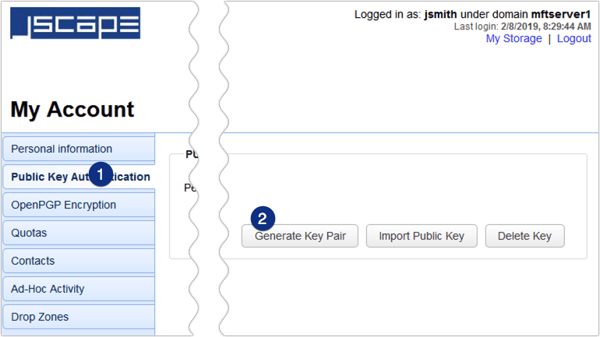Generate Public Private Key Pair Pem
- Generate Public Private Key Pair Pem Code
- Online Generate Public Private Key Pair
- Generate Public Private Key Pair Pem Key
- Generate Pem Key Windows
- Generate Public Private Key Pair Pem Number
To sign an assembly with a strong name, you must have a public/private key pair. This public and private cryptographic key pair is used during compilation to create a strong-named assembly. You can create a key pair using the Strong Name tool (Sn.exe). Key pair files usually have an .snk extension.
When the PEM format is used to store cryptographic keys the body of the content is in a format called PKCS #8. Initially a standard created by a private company (RSA Laboratories), it became a de facto standard so has been described in various RFCs, most notably RFC 5208 ('Public-Key Cryptography Standards (PKCS) #8: Private-Key Information Syntax Specification Version 1.2'). Openssl genrsa -out private.pem 1024 To generate public (e,n) key from the private key using openssl you can use the following command: openssl rsa -in private.pem -out public.pem -pubout To dissect the contents of the private.pem private RSA key generated by the openssl command above run the following (output truncated to labels here).
Generate Public Private Key Pair Pem Code
Note

In Visual Studio, the C# and Visual Basic project property pages include a Signing tab that enables you to select existing key files or to generate new key files without using Sn.exe. In Visual C++, you can specify the location of an existing key file in the Advanced property page in the Linker section of the Configuration Properties section of the Property Pages window. The use of the AssemblyKeyFileAttribute attribute to identify key file pairs was made obsolete beginning with Visual Studio 2005.
Create a key pair
To create a key pair, at a command prompt, type the following command:
/the-essential-cosmic-perspective-8th-edition-access-code-generator-key.html. sn –k <file name>
Online Generate Public Private Key Pair
In this command, file name is the name of the output file containing the key pair.
The following example creates a key pair called sgKey.snk.
If you intend to delay sign an assembly and you control the whole key pair (which is unlikely outside test scenarios), you can use the following commands to generate a key pair and then extract the public key from it into a separate file. First, create the key pair:
Next, extract the public key from the key pair and copy it to a separate file:
Generate Public Private Key Pair Pem Key
Once you create the key pair, you must put the file where the strong name signing tools can find it.

Generate Pem Key Windows
When signing an assembly with a strong name, the Assembly Linker (Al.exe) looks for the key file relative to the current directory and to the output directory. When using command-line compilers, you can simply copy the key to the current directory containing your code modules.
If you are using an earlier version of Visual Studio that does not have a Signing tab in the project properties, the recommended key file location is the project directory with the file attribute specified as follows: